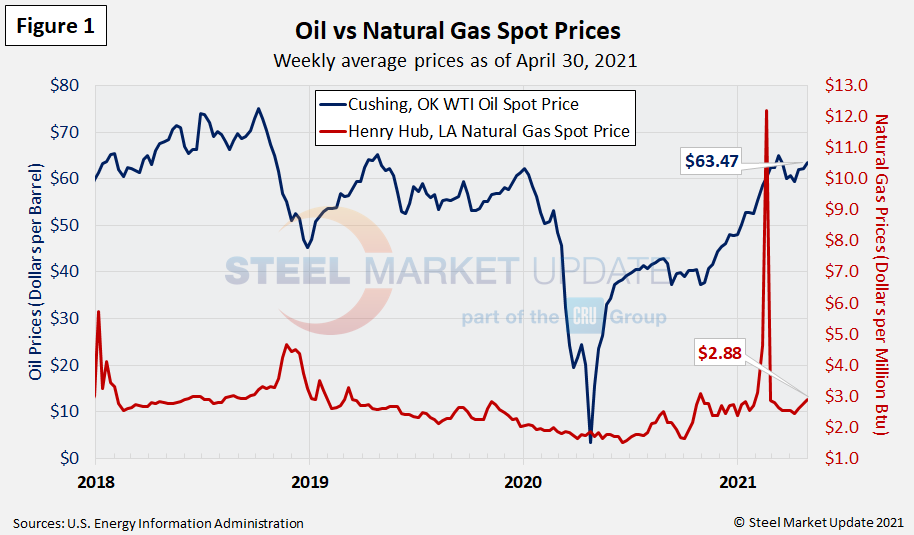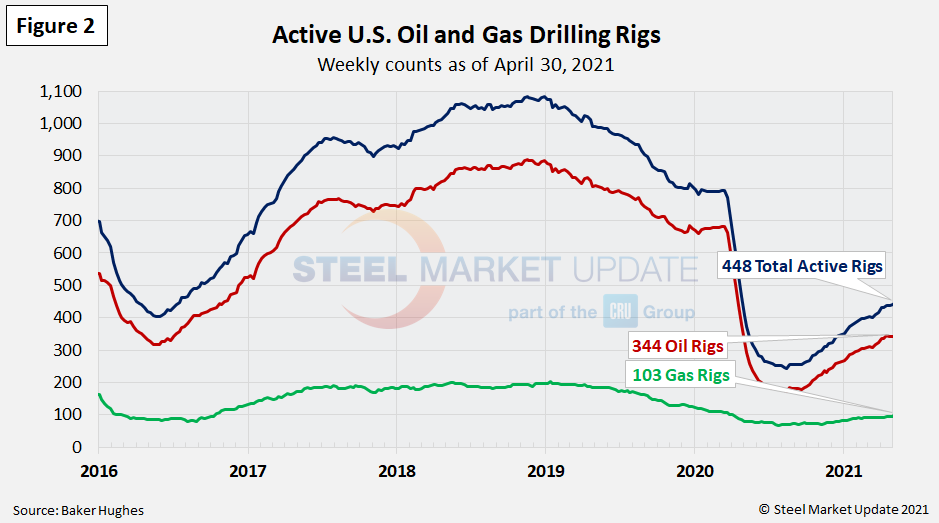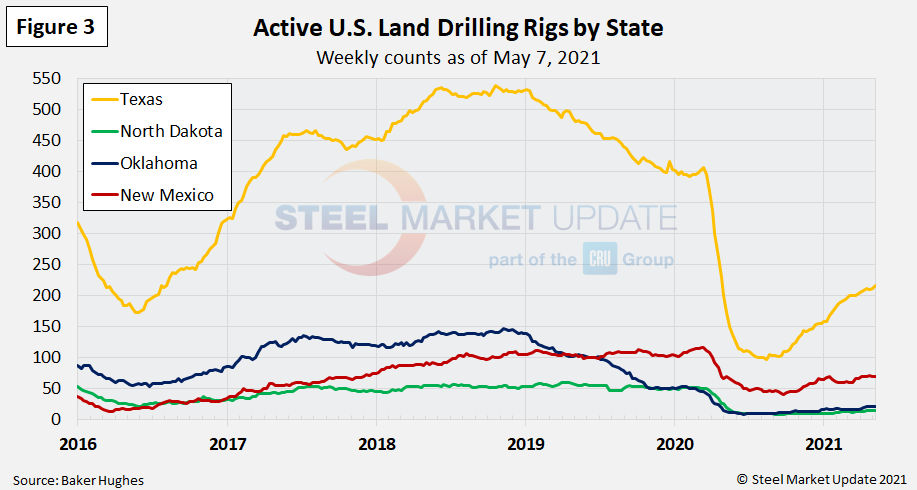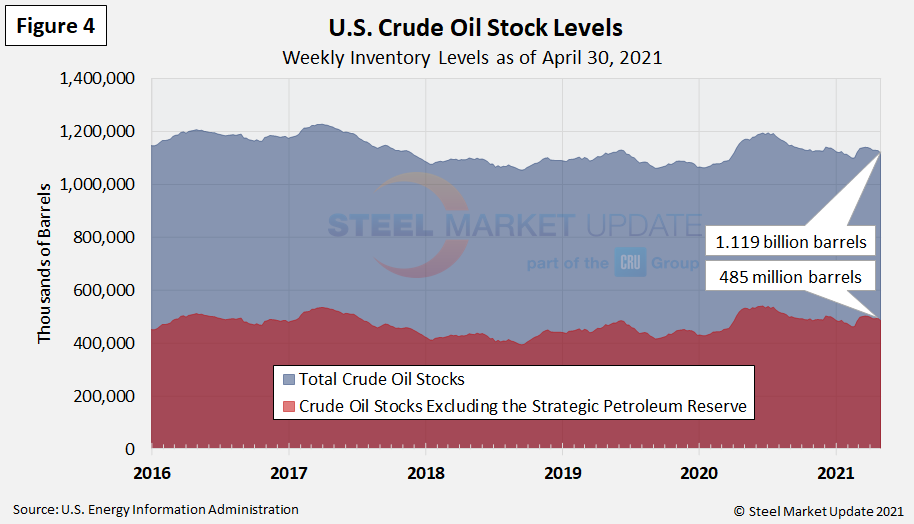Environment and Energy

SMU Analysis: Energy Use Rising Along with Economy
Written by Brett Linton
May 12, 2021
The Energy Information Administration’s April Short-Term Energy Outlook remains subject to heightened levels of uncertainty as responses to COVID-19 continue to evolve. Economic activity has increased significantly compared to previous years and, combined with the easing of COVID restrictions, energy use is rising. The EIA expects oil demand to continue to strengthen due to those factors. Gasoline consumption is also expected to rise as more vehicles return to the roadways. Crude oil spot prices are forecast to remain steady in the second quarter and decline slightly through the end of the year. Natural gas prices are expected to rise this year due to growth in natural gas exports and rising domestic consumption. EIA forecasts a mostly balanced global oil market for the remainder of 2021.
Spot Prices
The spot market price for West Texas Intermediate (WTI) has rebounded since our last energy update, at $63.47 per barrel as of April 30. Natural gas prices at the Henry Hub in Oklahoma are now up to $2.88 MMBTU (million British Thermal Units) as of April 30. The market has adjusted from the mid-February spike when winter storms impacted much of the nation and the scarcity of natural gas and rising demand drove spot prices through the roof. Figure 1 shows the weekly average spot prices for each product.

Rig Counts
The number of active U.S. oil and gas drill rigs has continued to recover since mid-2020, up to 448 active drill rigs as of last Friday. That total is comprised of 344 oil rigs, 103 gas rigs and 1 miscellaneous rig, according to the latest data from Baker Hughes (Figure 2). While up over recent months, active drill rigs are still down 44 percent from the March 2020 level of 793 rigs, just prior to the coronavirus shutdowns. The table below compares the current U.S., Canada and International rig counts to historical levels.


U.S. oil and gas production are heavily concentrated in Texas, Oklahoma, North Dakota and New Mexico, which have all seen declines of 40-70 percent since March of last year. The most active state, Texas, now has 216 active rigs in operation, the highest level seen since April 24, 2020. Texas rigs had plummeted from 407 in March 2020 to 97 rigs in August 2020 (Figure 3).

Stock Levels
U.S. total crude oil stocks in 2020 had surged from mid-March through July, but have steadily declined since then. The latest level is down compared to our last update to 1.119 billion barrels as of April 30, down from 1.170 billion barrels at the same time last year (Figure 4).

Trends in energy prices and rig counts are a predictor of demand for oil country tubular products (OCTG), line pipe and other steel products.
By Brett Linton, Brett@SteelMarketUpdate.com

Brett Linton
Read more from Brett LintonLatest in Environment and Energy

June energy market update
In this Premium analysis we examine North American oil and natural gas prices, drill rig activity, and crude oil stock levels. Trends in energy prices and rig counts serve as leading indicators for oil country tubular goods (OCTG) and line pipe demand.

EPA deregulation proposals win praise from steel advocates
Two industry groups are applauding two EPA proposals that would support domestic steel production.

Met coal receives critical materials status
The US Department of Energy (DOE) adds metallurgical coal to the nation’s list of Critical Materials, following its designation by US Secretary of Energy, Chris Wright’s announcement on May 22.

May energy market update
An analysis of the North American energy market in May.

House committee blocks GOP budget proposal
The budget proposal has big implications for steel and manufacturing.
